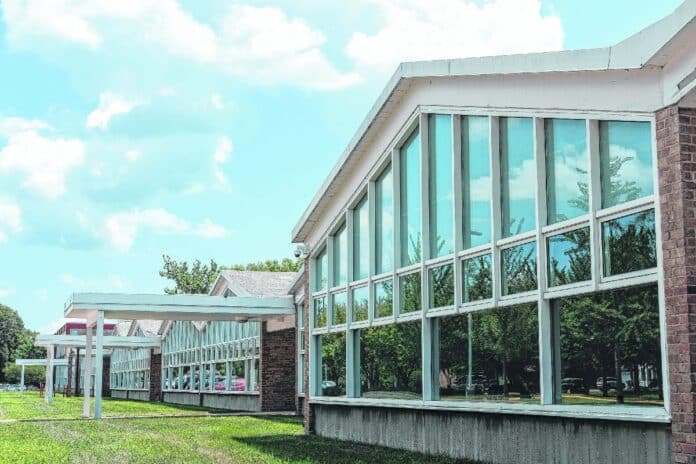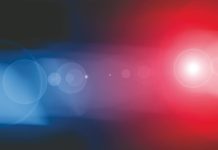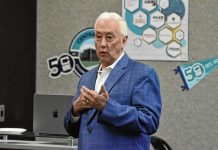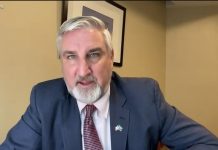
The 2020-21 school year begins Aug. 10 for the Bartholomew Consolidated School Corp., and also marks the first day of in-person learning since March.
With that in mind, here’s a rundown on tips, rules and reminders as BCSC reopens with modifications.
Packing tips
Water fountains will be turned off, but touchless filling stations will be available. Students can bring their own water bottle or receive one from BCSC.
[sc:text-divider text-divider-title=”Story continues below gallery” ]
“It would be a huge help to schools for students to arrive with their water bottle full to start each day,” Northside Middle School Assistant Principal Evan Burton, said. “Just add this step into the morning routine of getting ready for school.”
Burton also suggested going through a daily checklist to make sure students have other important items such as backpacks, school devices (fully charged) and face coverings.
Superintendent Jim Roberts also noted that it might be helpful to pack a small bottle of hand sanitizer and an extra face mask — just in case.
Bus procedures
Students will be screened for COVID-19 upon entry to buses. BCSC Director of Operations Brett Boezeman said that if a thermometer shows a child has a fever, the driver will exercise their best judgment in responding to the situation.
“Ideally, the child would not get on the bus,” Boezeman said. “Now, there are some situations where they may be a first-grader, who’s 6 years old, and there’s no parent there. We’re obviously not going to just turn the child back and say, ‘head back towards your house’ and drive on.”
Boezeman said that there may be some situations when a child with a fever may remain on the bus for their safety. The child, masked, would be isolated at the front of the bus. The driver would then work to contact the parent or guardian so they can pick up the child.
After being screened for COVID-19, students will load the bus from back to front. Physical distancing will be maintained on buses when possible. When possible, seating charts will be used on buses to aid with contact tracing. Buses will be on all scheduled routes.
COVID-19 screening
Students and staff should not report to school if experiencing any of the following symptoms:
Temperature of 100.4 degrees or above
Difficulty breathing or shortness of breath
Cough
Congestion or runny nose
Sore throat
Nausea
Muscle pain
Chills
Diarrhea
New loss of taste or smell
Like on buses, students and staff will have their temperatures checked upon entering school buildings.
“We are not requiring a person to be screened a second time entering that same building,” Roberts said. “If a student is going to and from buildings, they might be asked to simply because the (second) school building is not aware of the data from the other time.”
A student with a fever of 100.4 degrees or higher will wait in a designated isolation area until their parent or guardian arrives. Staff members with such a fever will return home.
Students with COVID-19-like symptoms will also wait in an isolation area. Students and staff members may return to school as directed by a healthcare provider.
Updated information about local COVID-19 trends will be posted on BCSC’s website every week.
Contact tracing protocol
BCSC will work with local and state health officials on contact tracing. Boezeman said that if a child is identified as a close contact of a COVID-19 case, their family will likely be contacted twice: once by the school corporation and once by the state.
The Centers for Disease Control and Prevention (CDC) defines a close contact as any individual who was within 6 feet of an infected person for at least 15 minutes, starting from two days before illness is onset. For asymptomatic patients, it’s two days prior to a positive specimen collection until the time the patient is isolated.
The CDC also states that asymptomatic contacts who test negative should self-quarantine for 14 days after their last contact with a confirmed or probable COVID-19 case.
“If a student has to be quarantined because they are in close contact to a person that is a positive test case, it is for 14 days,” Roberts confirmed.
Roberts said that there will be a team of BCSC leaders (such as a school’s principal, guidance counselor and nurse) who will be involved with contact tracing.
“Every positive test we get, we’re not sending a letter to that classroom, necessarily, or that building,” he added. “There are some HIPAA and FERPA issues that we have to at least pay attention to in terms of rights of privacy. But we will be making sure that we are reaching out to specific individuals who would be in close contact to that positive test.”
Absences
Attendance incentives will not be used during the 2020-21 school year.
At a recent strategic planning session, Roberts said that students who are waiting on results from a COVID-19 test should stay at home — even if they are not symptomatic. Waiting for a test result at home counts as an excused absence.
Roberts added that students who are at home temporarily will be able to keep up with their classes by using itslearning.
“Just like in the past, we’ve always taken care of students who have been out for short-term,” BCSC Director of Elementary Instruction Laura Hack said. “A parent or child may say, ‘Can you put your stuff on itslearning so we can use it?’ Absolutely. ‘You know what? My child’s too sick at this time, can you catch them up when they come back?’ Absolutely. We work with those parents just like we’ve always done.”
Other health needs
Students must be up to date with their required immunizations at the start of the school year. A list can be found on BCSC’s website in the “For Parents” section under the “Resources” tab.
“In-person and online/virtual students will be held to the same expectations,” BCSC Director of Nursing Kelli Thompson said. “The Hepatitis A vaccine is now required for all grades K-12. Otherwise, the requirements are the same as last year.”
The reopening plan advises that medications should be given to students at home, if possible, to minimize visits to the nurse’s office.
The plan also states that Nebulizer treatments are not allowed. Parents are advised to contact a healthcare provider for an alternative plan.
Parental visits
The reopening plan states that, “Only essential visitors may enter BCSC facilities (ex. Department of Child Services, therapists, other necessary resources); parent visits will be limited to the office area.”
Masks
Face coverings are required for students and staff members, who will each be given two washable cloth masks.
“(Students) are also allowed to wear their own, whether it’s a washable one or a disposable one,” Roberts said. “We just ask them that it’s appropriate. There are a lot of masks that now have logos and sayings and other designs that are on them. Anything that couldn’t be on a T-shirt also can’t be on a mask.”
Face coverings may be removed while eating and drinking.
Some individuals may be exempt from wearing face coverings due to health needs. Roberts said that any student seeking an exemption will be required to have a medical note from their healthcare provider.
Roberts said that if a student does not have a medical need, but has other issues with wearing masks, the school corporation will still help that student adjust to the situation.
“We’re going to try to work with children to figure out how to get them to the point where they can wear a mask,” he said. “We might have some scaffolding that takes place in terms of working from not wearing a mask, wearing a mask for a period of time — or even different kinds of masks that seem to fit or feel more comfortable — all the way to finally being able to wear a mask on a regular basis.”
Lunch
Students and staff will wash their hands before and after lunch. Food and utensils will not be shared, and lunches will be “grab and go.”
“In the past, we would’ve had a tray or plate lunch,” Roberts said. “This school year, we’re going to have a bag lunch. Students will have a hot option and a cold option each day. There are a variety of things that they can request, from a choice standpoint, in terms of their sides and a la carte items. But if they choose those, instead of them picking them up and putting them on a tray, our cafeteria staff will be picking the items up and putting them into a bag. And that bag becomes a portable thing for our kids.”
He added that the new system “doesn’t mean the quality of the food has decreased or diminished” but is simply a way to make meals more portable, which will help with physical distancing.
Also, BCSC has raised school meal prices by 10 cents. Elementary lunch will now cost $2.80 and secondary lunch is $2.90. For all students, breakfast will now cost $1.45. For adults, lunch will cost $3.60 and breakfast will be $1.95. The cost of reduced meals will not increase.
Cafeterias will operate at 50% capacity, according to the reopening plan. Classrooms and other school locations may be used as temporary lunchrooms to aid social distancing. Changes to meals may vary by schools. Some of the possible changes may include spaced serving lines, spaced seating, longer meal periods or multiple meal periods.
High schools will continue to have an open campus policy for lunch.
Block scheduling
BCSC is continuing plans to switch to block scheduling for high school students this fall.
Previously, the high school schedule consisted of eight 45-minute periods each day. Starting this fall, students will attend four 88-minute classes each day on a two-day rotation, with a student resource time and student advisory period built into alternating days.
Other words of advice
Roberts said that everyone has a part to play when it comes to COVID-19 prevention.
“I would just ask that our community, as a whole, and of course our parents and students as we try to reopen here, are practicing safe habits,” he said. “Whatever ends up in our school buildings is coming from outside of it.”
Thompson said, “Some of the best defense strategies start with the basics: wash your hands, avoid close contact, cover your coughs and sneezes, and stay home when you are feeling ill. Practicing these habits while at school and within the community will help keep all of us safe and healthy.”
Burton said, during every school year, patience and flexibility are essential. He added that it also helps to go into the new year with positivity.
“Each day has the chance to be whatever your student makes of it,” he said. “That’s what makes school great. A positive attitude and outlook really go a long way. Every year comes with nerves and excitement, and this year is no different.”
[sc:pullout-title pullout-title=”Additional resources” ][sc:pullout-text-begin]
BCSC’s reopening plan and information on COVID-19 indicators is available on its website at https://www.bcscschools.org/. The reopening plan contains several links to CDC and state health resources.
Up to date information will also be posted on BCSC’s social media accounts.
More information about COVID-19 and its prevention can be found at https://www.bcscschools.org/covid19.
Questions about reopening plans can be sent to [email protected]. Roberts also said that parents’ "best resource" is their building principals and leaders.
Additional COVID-19 resources:
- Prevention: https://www.cdc.gov/coronavirus/2019-ncov/prevent-getting-sick/prevention.html
- Testing: Indiana testing sites can be found at https://www.coronavirus.in.gov/ under "COVID-19 Testing Information."
- State guidance on screening for COVID-19, and when an individual with a possible or confirmed case can return to school, is available at https://www.coronavirus.in.gov/2400.htm under "Back to School Resources."
[sc:pullout-text-end][sc:pullout-title pullout-title=”ABCs of back to school health and wellness” ][sc:pullout-text-begin]
BCSC Director of Nursing Kelli Thompson’s ABCs of back to school health and wellness:
Allergy asthma, diabetes and seizure health plans: Contact your school nurse to update health plans for the school year.
Be safe, be seen: Plan your transportation and review bicycle and pedestrian safety with students.
- Motorists should be aware of students walking and biking to school that have not been previously out in the neighborhood at that time.
- Students walking to school should only cross the street at crosswalks and should, look left, right and left again.
- Students on bikes should wear a helmet, reflectors and ride on the right side of the road. Tires and brakes should be checked, and routes should be practiced with your child.
Close contacts: The school will use seating charts on the bus, at school, and during extracurriculars to identify close contacts to a positive COVID-19 case. It’s equally important to remember the contacts encountered outside of school.
Details: Review the reopening plan for your school for a detailed outline of the school day. Students will receive a water bottle, and are asked to start the day with a full bottle. There will be touchless filling stations in the buildings.
Emergency contacts: Share phone numbers and emergency contacts with the school. If a child needs to be picked up from school, it’s important to have updated contacts.
Flexibility: This school year will look and feel differently than previous years. It’s important to talk to students about the school day, and look for nonverbal cues that they may be experiencing stress or anxiety.
[sc:pullout-text-end][sc:pullout-title pullout-title=”Update on makeup days” ][sc:pullout-text-begin]
BCSC will make up its two missed student days during spring break on March 8 and 9.
The first day for BCSC students was recently moved back to Aug. 10. Originally, the school corporation was set to start in-person classes on Aug. 6.
Aug. 6 and 7, the first two scheduled student days, were teacher work days.
The two missed student days will be made up on the first two days of spring break.
[sc:pullout-text-end]




